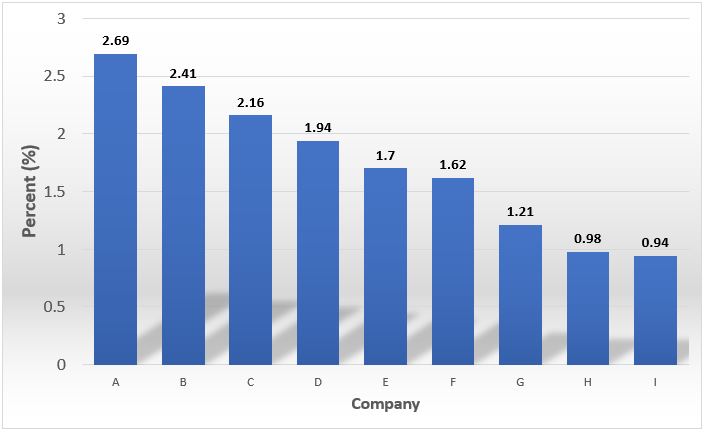EXPECT RESULTS FROM YOUR IMPROVEMENT PROGRAM
Improvement programs produce many soft benefits, but you should expect step changes in process performance and verifiable financial results.
How much financial benefit should a mature improvement program produce annually?
In a mature program, improvements should result from localized daily efforts by every individual and larger cross-functional team projects. While both are necessary, it is more often the large impact projects that generate a measurable impact to the process and the resulting financial benefits.

Localized Improvements
The side benefits that result from small localized improvement are the engagement of and discretionary effort from every individual using their problem-solving abilities to remove process waste in their immediate work area. Leaders should give permission and encourage employees to fix the things that they want to improve in their local work areas. The employees should also be encouraged to share what they did, as well as adopt ideas from their teammates.
This approach will result in multiple localized improvements. Typical results in a physical work environment include clean, organized work areas with the right tools within easy reach. Reduction in risk and burden are additional benefits. In the knowledge workplace, the same results take place online with other benefits of automated routines for repetitive tasks.
The challenge is that it is often impossible to validate the value of uncoordinated localized improvements.
Large Improvement Projects
In a coordinated parallel effort, you need to have a queue of ideas for more significant improvement projects. Consider both the required effort and the financial impact when selecting large projects for implementation. Examples may include a focus on the elimination of waste, especially at process constraints. They may also tackle streamlined workflows across processes that cross organization boundaries.
Team projects are needed to achieve a cross-functional implementation by multiple people. The large projects may include physical changes that require expense dollars but do not involve capital purchases. They can be transactional efforts that require changes to established practices and procedures.
The timeline for facilitated team projects maybe a 1-week intense effort or executed over a 2 to a 3-month timeframe. Caution: The longer a project takes, the less likely it will complete successfully.
Implement the recommended changes and track the process metric(s), then compare results to baseline data to calculate realistic financial benefits verified using appropriate rigor. To learn more about the financial verification process, see our perspective on this topic. Financial Verification Process
Total the cumulative annual value and divide by the business unit or company revenue to produce a normalized percentage that allows comparison between units and companies. This metric works well, even comparing companies across various industries.
According to Michael Marx, research manager for iSixSigma, “Our data also showed that corporate-wide Six Sigma deployments save an average 2 percent of total revenue per year.”
How Much Financial Benefit Should Companies Strive to Achieve from Improvement Initiatives?
In the Jan/Feb 2007 issue of iSixSigma, the magazine reported the results of a survey of companies with improvement programs. The findings were impressive.
According to Michael Marx, research manager for iSixSigma, “Our data also showed that corporate-wide Six Sigma deployments save an average 2 percent of total revenue per year.”
The following bar chart of benefit from improvement programs ranks the companies as a percent of the average annual revenue per year. It also revealed that there is no correlation with the size of the company, meaning that both large and small companies can potentially achieve this level of financial benefit.

Results Reconfirmed by Survey
I had the fortune of representing Chevron on The Conference Board, Council of Six Sigma Executives. During 2010, I facilitated an internal survey that reconfirmed this level of financial performance. Half of the 15 participating companies in the internal poll reported that they used conservative numbers and verified the benefits from the improvements. Most participants used gross numbers before tax.
Disclaimer: The iSixSigma summary report and The Conference Board survey reveal what is possible, but no one can guarantee your actual performance. Results are a function of many things, including management commitment, the efficacy of deployment, the focus areas, and the program maturity in all areas.
Are you tracking the financial benefit of your improvement program? What is your annual percent of revenue?
